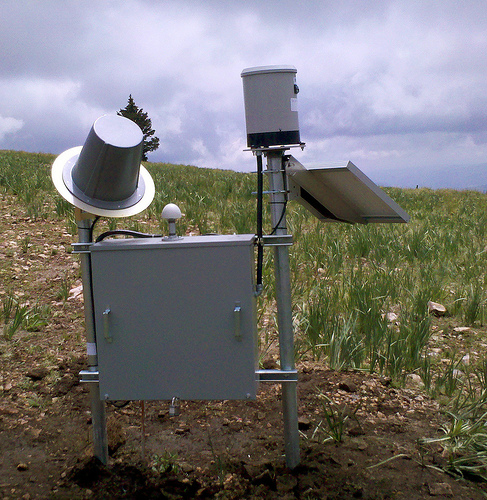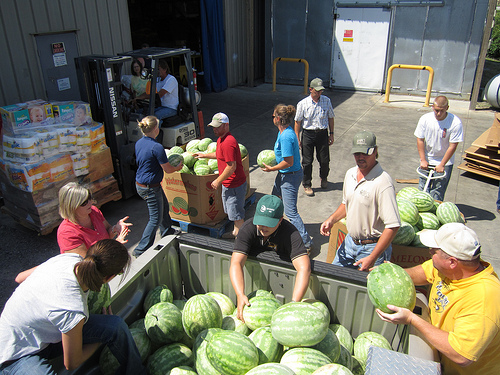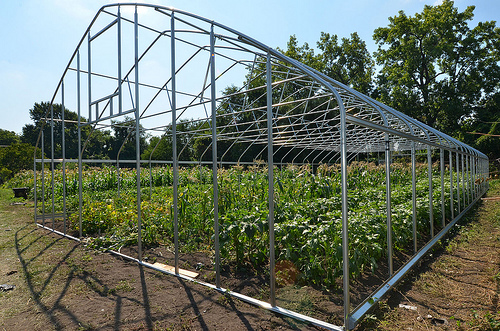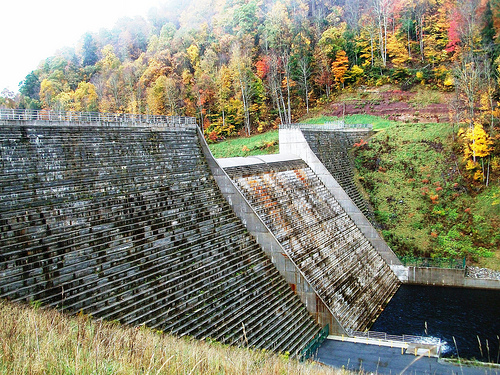
The crops growing in the People's Garden at USDA Headquarters benefit from a drip irrigation system that Bob helped design. It is a planned irrigation system where water is applied directly to the root zone so each crop area is watered more uniformly and efficiently.
What do lawns, green roofs and electric bills have in common? If you ask Bob Snieckus, the answer is “energy.”
Even though Snieckus stays busy as National Landscape Architect for USDA’s Natural Resources Conservation Service (NRCS), he is also committed to conserving energy and improving sustainability in the Washington, D.C., buildings and landscapes where he works. Read more »

Buck Mountain precipitation gage with solar panel, radio stand, and electronics—Whitewater Baldy Complex Fire, N.M.
New Mexico experienced in June two catastrophic wildfires—the Whitewater Baldy Complex Fire and the Little Bear Fire. One consequence of those fires has been flash flooding. Water runs off more quickly during rainstorms in areas where fires have stripped the landscape. These floods can happen with very little notice, endangering communities downstream. Read more »

Volunteers unloading the gleaned watermelons at a food bank in Missouri.
What do the National Resource Conservation Service , Farm Service Agency, Soil and Water Conservation District (SWCD), and 16 tons of watermelons have in common? These USDA agencies have joined together in Southeastern Missouri to donate literally tons of watermelon to the food banks in Sikeston and Cape Girardeau, Missouri. This massive donation is the result of gleaning, which is the act of collecting excess foods from farmers markets, farms, stores, restaurants, gardens and elsewhere and donating that food to those in need. Read more »

A polyethylene cover will be added to this frame to allow a seasonal high tunnel to do its job – provide a warmer climate for plants.
For years, Avon Standard has tilled the soil, planted the seeds and harvested the produce from his community garden with one purpose in mind—to feed people.
“My passion is to give and grow,” says Standard of the fruits and vegetables that he provides free to family, friends and the surrounding community. He recently took his efforts a step further. Read more »

The Elkwater Fork Dam with fall foliage. A paved accessible fishing area below the dam provides an area for those with physical impairments to fish in the stilling basin.
In 1993, several towns in Upper Tygart Valley Watershed in Randolph County, W.Va., experienced a dangerous shortage of water. At a critical point, the water plant was within 72 hours of completely running out of water. Soon after that, local community groups, interested citizens and government agencies began working toward a solution to avoid future water shortages.
The solution they ultimately settled on was to build a dam on the Elkwater Fork of the Tygart River. The dam would create a new reservoir that would provide a dependable water source for the 27,000 people in the watershed. Read more »
Just outside Lexington, Ky., you can find Peaceful Valley Farm, the longtime Kiser family home. Joe Kiser bought the 162-acre farm in 1965. The farm has thrived since then—even during the current severe drought—thanks to Kiser’s conservation-minded land management.
Kiser operated the farm, which includes cattle and a large garden, for many years using water from a nearby stream.
With technical assistance from USDA’s Natural Resources Conservation Service (NRCS), Kiser dug a well in the mid-‘90s, but continued to use the stream for supplemental water as needed. But when the stream ran dry in this summer’s drought, Kiser struggled to keep his livestock and garden watered and had to rely partly on city water. Read more »





